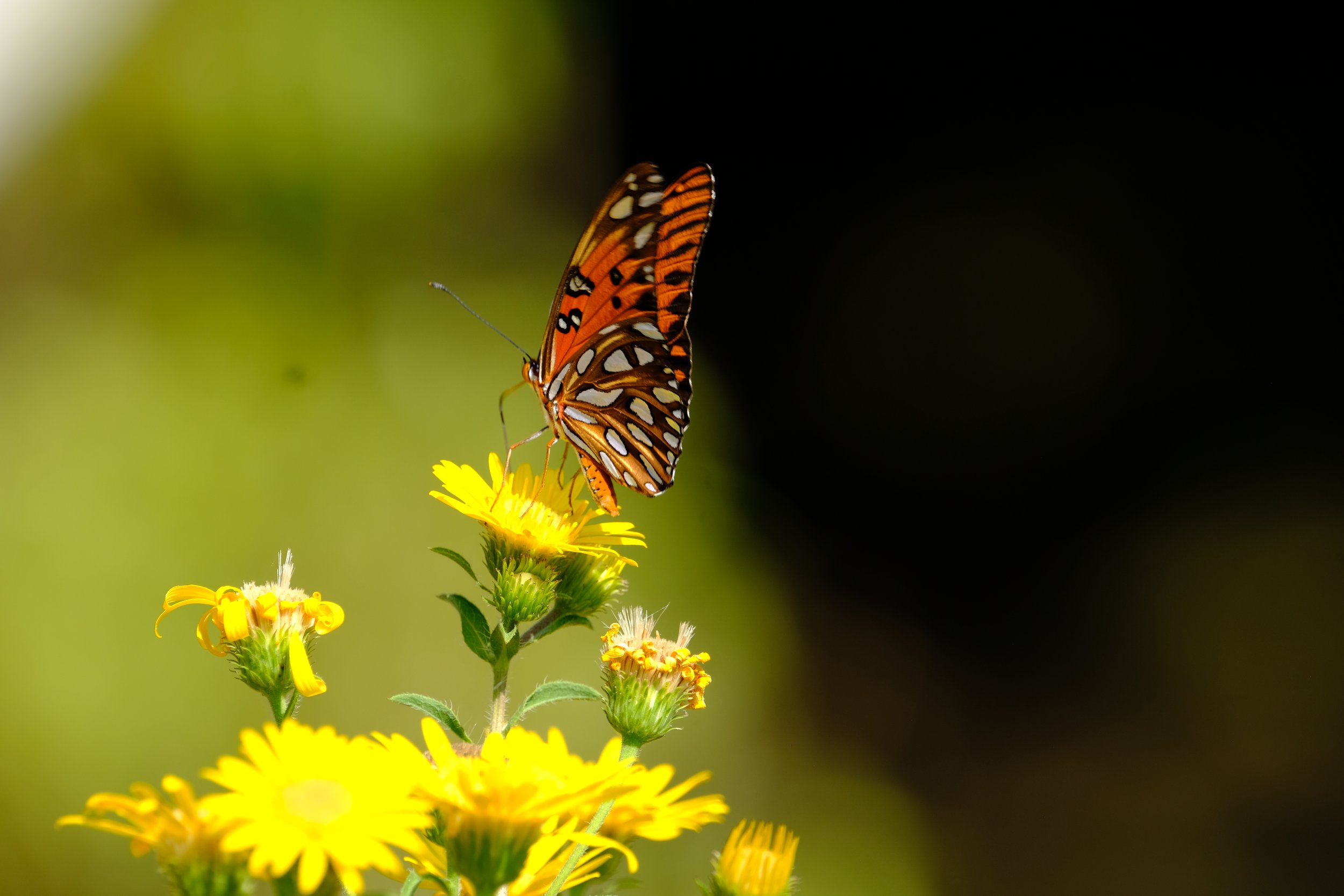Creature Feature: The Gulf Fritillary Butterfly
Chances are high you have seen this bright orange beauty floating above flower beds and meadows during warmer months. The Gulf Fritillary is common, but that doesn’t mean it isn’t as fascinating and important as more rare species. This medium-sized butterfly ranges from Mexico to Texas and Florida, migrating north for summer breeding and returning to frost-free climates over winter.
Gulf Fritillaries start their lives as single eggs laid on the leaves of plants in the genus Passiflora, commonly known as passion vines. These are the host plant for the Gulf Fritillary’s eggs and caterpillars.
The eggs hatch after 3-5 days and the caterpillars feast on the passion vine’s leaves. The larval stage lasts 11-16 days depending on temperature. The warmer it is, the faster the caterpillars grow, shedding their skin 5 times as they gain size. When the caterpillars are ready, they anchor themselves in a sheltered place, hang upside down, and shed their caterpillar skin for the last time to reveal the chrysalis. It is common to conceptualize the chrysalis as a structure the caterpillar builds around itself, but it is actually hardened skin - the shell of the pupa. The chrysalis looks like a dead leaf, helping the pupa hide from predators during metamorphosis. As before, temperature hastens development. The adult butterfly emerges 11-21 days later.
Gulf Fritillary adults have a wingspan of 2.5-3 inches, with females being larger and more brightly colored than males. The dorsal surface of the wings is a deep orange transected by black bands, forewings speckled with white spots. The underside of the wings resembles stained glass with panes of white between bars of tan and brown. Despite lacking jaws, stingers, or horns, these butterflies are not helpless to predation. When disturbed, they emit a noxious scent from glands on their abdomen. They also keep toxins from the passion vines they consumed as caterpillars in their bodies, which makes them taste bad. Many predators learn to avoid these butterflies.
If you would like to attract butterflies like the Gulf Fritillary to your garden, make sure to come by our Native Plant Nursery and pick up some pollinator favorites. Our nursery staff is here to assist you Tuesday through Saturday, 9:00 AM-3:00 PM April to November.




